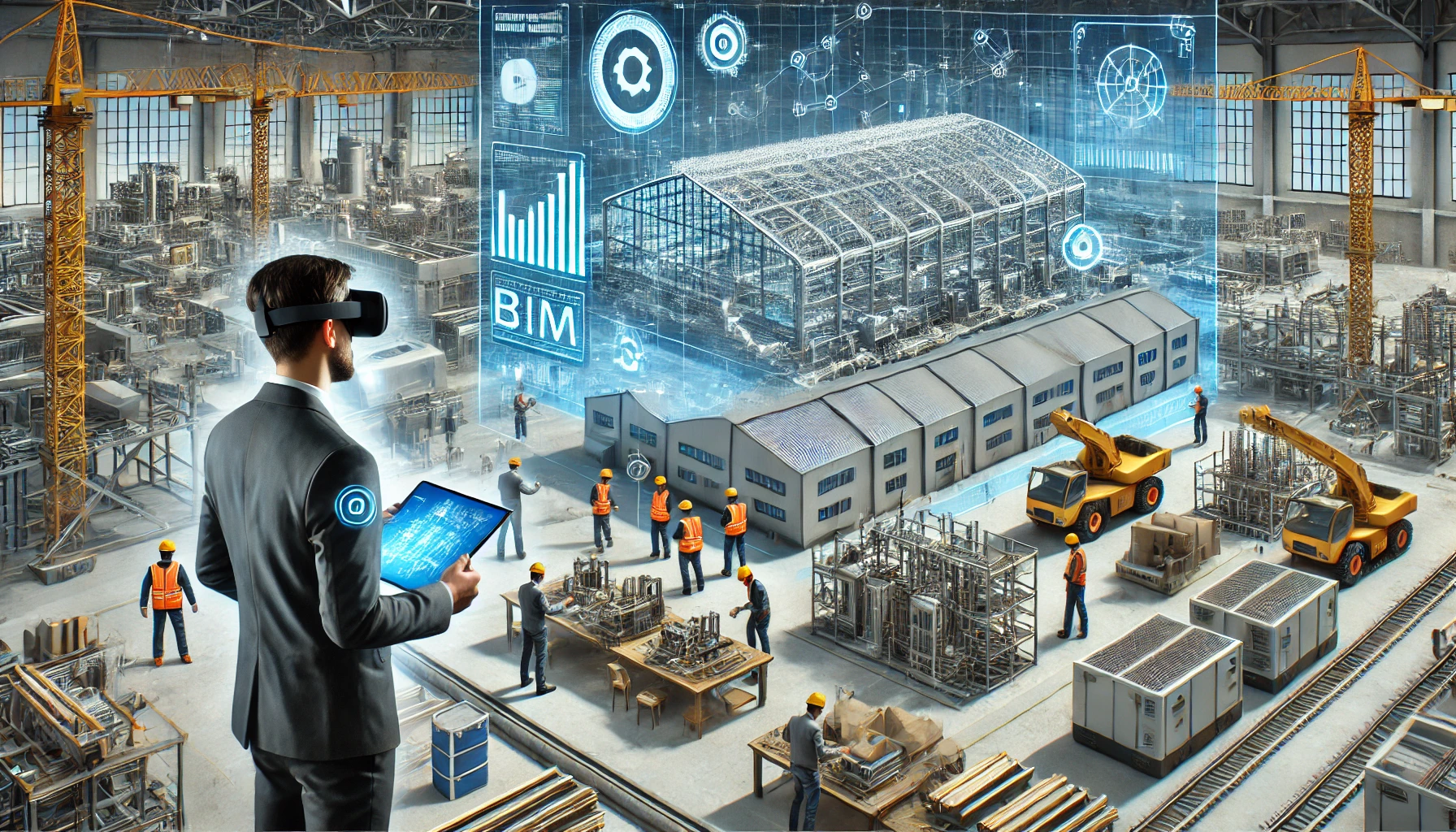The construction industry is undergoing a digital revolution, and Building Information Modeling (BIM) is at the center of this transformation. BIM is a digital process that creates intelligent 3D models to optimize planning, design, and construction.
In industrialized construction, where precision, efficiency, and sustainability are key, BIM plays a crucial role in reducing errors, improving collaboration, and streamlining manufacturing.
But how exactly does BIM enhance industrialized construction? Let’s explore its benefits, applications, and impact on the industry.
What is BIM?
BIM is a 3D modeling technology that allows architects, engineers, and builders to visualize and simulate every aspect of a construction project before it starts. Unlike traditional 2D blueprints, BIM creates data-rich digital models that include:
- Architectural design (layout, materials, and finishes).
- Structural components (steel frames, prefabricated elements, and reinforcements).
- Mechanical, Electrical, and Plumbing (MEP) systems.
- Construction scheduling and cost estimation.
With real-time collaboration and advanced simulation, BIM reduces construction risks and enhances decision-making.
How BIM Improves Industrialized Construction
1. Enhanced Prefabrication and Modular Construction
Industrialized construction relies on off-site manufacturing of building components. BIM helps by:
- Optimizing designs for modular and prefabricated buildings.
- Ensuring precise measurements, reducing material waste.
- Simulating assembly processes, avoiding on-site errors.
🔹 Impact: Faster production, reduced costs, and improved quality control.
2. Better Project Coordination and Collaboration
Traditional construction often suffers from miscommunication between architects, engineers, and contractors. BIM enables:
- Cloud-based collaboration, allowing all stakeholders to access updated models in real time.
- Detection of design conflicts early, preventing costly mistakes.
- Seamless integration between structural, electrical, and plumbing systems.
🔹 Impact: Fewer errors, better teamwork, and smoother project execution.
3. Cost and Time Savings
BIM helps construction firms reduce project costs and timelines by:
- Providing accurate material estimates, minimizing waste.
- Automating clash detection, reducing the need for on-site rework.
- Improving logistics and scheduling, ensuring on-time material delivery.
🔹 Impact: Projects are completed 30-50% faster with lower costs.
4. Sustainability and Waste Reduction
BIM promotes eco-friendly construction by:
- Analyzing energy efficiency, improving insulation and solar positioning.
- Reducing unnecessary material use, optimizing prefabrication.
- Tracking carbon footprints, supporting sustainable design choices.
🔹 Impact: More environmentally friendly buildings with reduced waste.
5. Improved Safety and Risk Management
Construction sites are high-risk environments. BIM helps by:
- Simulating construction sequences, identifying safety hazards.
- Enhancing worker safety training, using virtual models.
- Predicting structural performance, ensuring compliance with safety regulations.
🔹 Impact: Fewer accidents, lower insurance costs, and safer construction sites.
Challenges of Implementing BIM in Industrialized Construction
1. High Initial Investment
- BIM software, training, and hardware upgrades require upfront costs.
- However, the long-term savings outweigh the initial expenses.
2. Learning Curve and Industry Resistance
- Many construction firms hesitate to adopt digital workflows.
- Training and education programs are needed for architects, engineers, and builders.
3. Data Management Complexity
- BIM models contain massive amounts of data, requiring advanced storage and security solutions.
Real-World Applications of BIM in Industrialized Construction
1. Smart Cities and Infrastructure
- Governments are using BIM for urban planning, smart highways, and sustainable buildings.
2. Modular and Prefabricated Housing
- Companies like Katerra and Skanska are integrating BIM with off-site construction for faster, scalable housing solutions.
3. Large-Scale Industrial Projects
- BIM is used in airports, hospitals, and commercial buildings to streamline construction.
The Future of BIM in Construction
As technology advances, BIM will become more powerful, integrating with:
- Artificial Intelligence (AI) for automated design improvements.
- Augmented Reality (AR) for on-site visualization.
- Digital twins, creating real-time, data-driven models for building maintenance.
With its ability to optimize industrialized construction, BIM is shaping the future of smarter, faster, and more sustainable buildings.
Would you adopt BIM technology for your next project?

